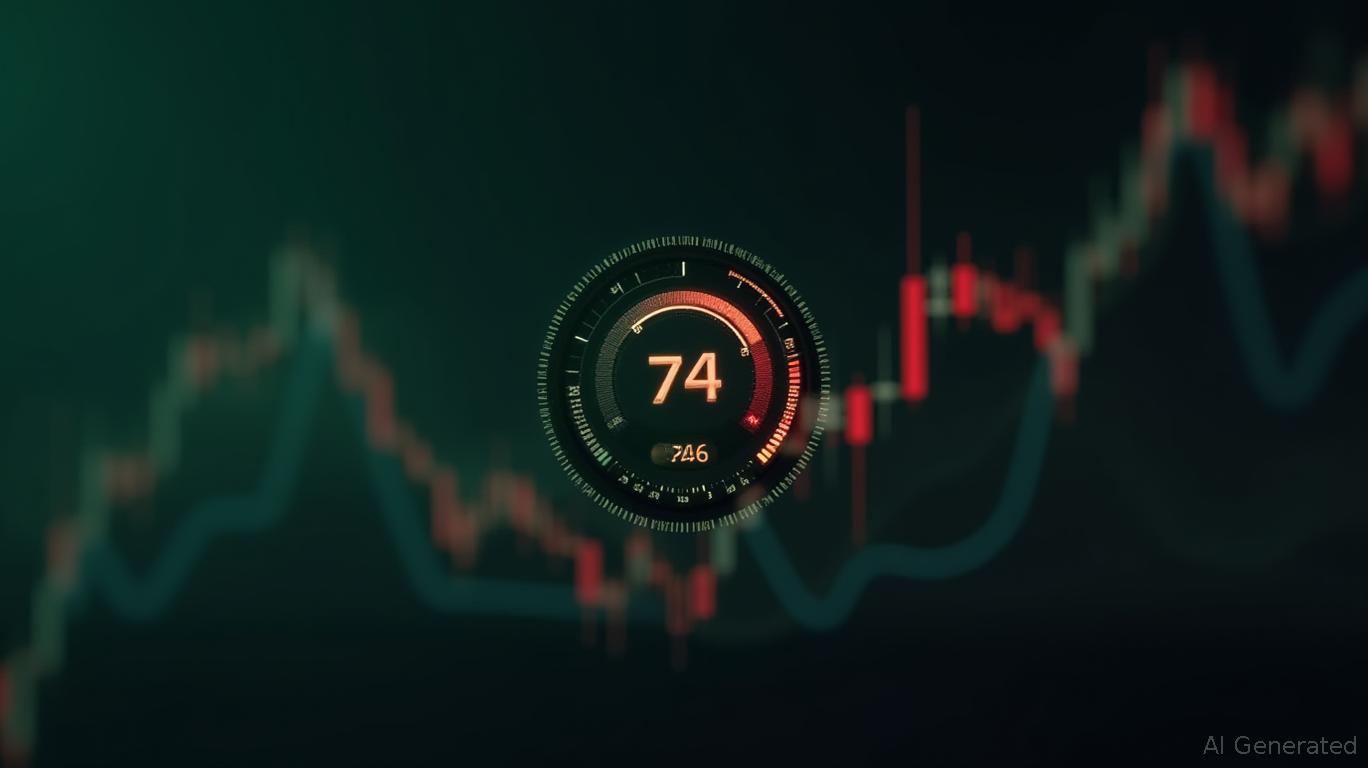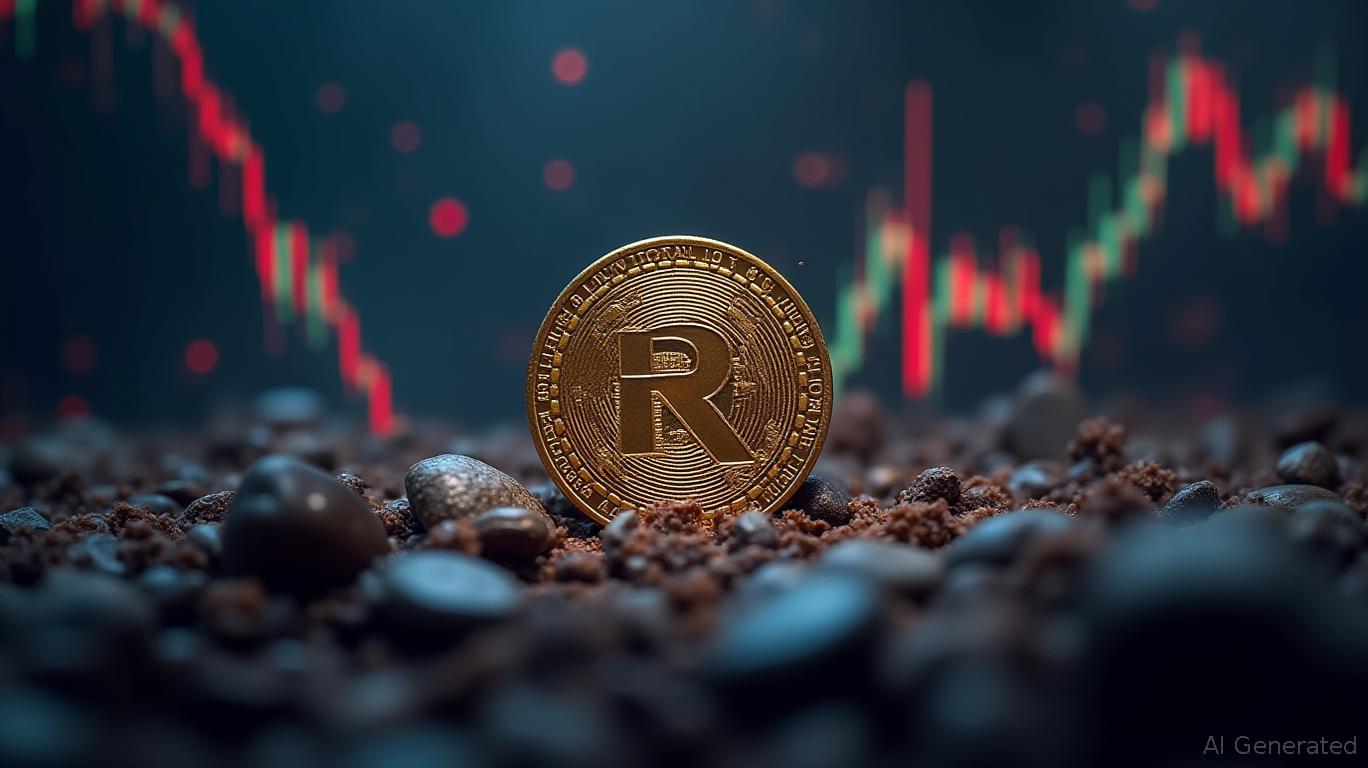AInvest Newsletter
Daily stocks & crypto headlines, free to your inbox
The Crypto Fear & Greed Index has surged to 74, firmly placing the cryptocurrency market in the ‘Greed’ zone. This significant eight-point jump from the previous day, as of June 26, indicates a notable shift in investor psychology, reflecting a growing sense of optimism and a willingness to buy. The index, provided by Alternative.me, measures the prevailing emotional state of the cryptocurrency market on a scale from 0 to 100, with 0-24 indicating ‘Extreme Fear,’ 25-49 ‘Fear,’ 50-74 ‘Greed,’ and 75-100 ‘Extreme Greed.’
This index is crucial because emotions often drive investment decisions, especially in volatile markets like crypto. By aggregating various data points, the index attempts to give a more objective view of collective market sentiment, helping investors avoid making impulsive decisions based purely on emotion. A score of 74 implies that optimism is running high, with investors feeling confident and a strong appetite for buying. While this might sound universally positive, it can also be a double-edged sword. On one hand, it reflects strong momentum and potential for further price appreciation. On the other hand, extreme greed can sometimes precede market corrections, as assets become overbought and ripe for profit-taking.
Historically, legendary investors like Warren Buffett have advised, “Be fearful when others are greedy, and greedy when others are fearful.” This contrarian approach suggests that times of widespread greed might be opportune moments for caution, perhaps even for trimming positions, rather than blindly chasing pumps. It’s about recognizing when the crowd might be getting ahead of itself.
The Crypto Fear & Greed Index is a sophisticated aggregation of six distinct factors, each weighted to reflect its influence on overall market sentiment. Understanding these components is key to grasping the index’s movements. The first factor is volatility, which analyzes the current volatility and maximum drawdowns of
compared to its average values over the last 30 and 90 days. High volatility often indicates a fearful market or an extremely greedy one, while stable, lower volatility might suggest calm before a storm or a period of consolidation.The second factor is market momentum/volume, which looks at the current trading volume and market momentum, comparing them with the average values of the last 30 and 90 days. High buying volumes in a rising market indicate strong positive momentum and increasing greed. Conversely, high selling volumes suggest fear. The third factor is social media, which analyzes social media trends, specifically tracking hashtags and mentions related to cryptocurrencies, their volume, and sentiment. A surge in positive social media mentions often correlates with rising excitement and greed. It’s a direct gauge of the public’s chatter.
The fourth factor is surveys, which historically gathered data from weekly polls, asking thousands of people about their perception of the crypto market. Although currently paused, surveys offer a direct insight into investor confidence. Their reintroduction could provide another valuable layer of sentiment data. The fifth factor is Bitcoin dominance, which refers to Bitcoin’s market capitalization as a percentage of the total cryptocurrency market capitalization. A rising Bitcoin dominance often indicates fear, as investors flock to the perceived safety and stability of Bitcoin during uncertain times. A falling dominance, on the other hand, suggests that investors are moving into altcoins, which typically happens during periods of higher risk appetite and greed.
The sixth factor is Google Trends, which analyzes search queries related to Bitcoin and other cryptocurrencies on Google Trends. A sudden increase in search terms like “Bitcoin price manipulation” often signals fear, while a surge in general terms like “buy Bitcoin” or “crypto investment” can indicate growing public interest and potential greed. Bitcoin often acts as the bellwether for the entire cryptocurrency market. Its price movements and overall health significantly influence the Crypto Fear & Greed Index. Given its dominant market capitalization and its status as the original cryptocurrency, Bitcoin’s performance often dictates the general mood of investors. When Bitcoin is rallying, optimism tends to spread across altcoins, pushing the index higher into the ‘Greed’ zone. Conversely, a sharp correction in Bitcoin’s price can quickly send the index plummeting into ‘Fear’ or ‘Extreme Fear,’ as investors become risk-averse.
This strong correlation highlights why keeping an eye on Bitcoin’s fundamentals and technical analysis, alongside the sentiment index, is crucial for any comprehensive investment strategy. A rising Bitcoin price, coupled with high social media engagement and trading volume, directly contributes to the current ‘Greed’ reading of 74. With the Crypto Fear & Greed Index flashing ‘Greed,’ investors should exercise caution. While it’s tempting to jump into a rising market, remember that ‘Greed’ often precedes corrections. Consider taking some profits if you’re holding significant gains, especially on assets that have seen parabolic increases. Use this period to re-evaluate your portfolio. Are you over-allocated to risky assets? Perhaps it’s time to rebalance towards a more diversified mix, or even increase your stablecoin holdings.
Avoid FOMO (Fear Of Missing Out). The higher the index, the stronger the FOMO. Don’t let emotional impulses drive your decisions. Stick to your pre-defined investment plan and risk tolerance. Even in a bull market, not all projects are created equal. Use this time to research fundamentally strong projects that still have room to grow, rather than chasing speculative pumps. Set stop-loss orders to protect your capital. If you’re entering new positions or holding existing ones, setting appropriate stop-loss orders can help mitigate potential losses if the market suddenly reverses. Look for contrarian opportunities. While most assets might be overvalued, there could still be gems that haven’t caught the market’s attention yet, or assets that are temporarily undervalued despite the overall optimism.
While the Crypto Fear & Greed Index is a valuable tool, it’s essential to understand its limitations. The index reflects current sentiment, which is often a reaction to past price movements. It doesn’t predict the future with certainty. It should not be used as a standalone buy or sell signal. A high ‘Greed’ score doesn’t guarantee an immediate crash, nor does ‘Fear’ guarantee a bounce. Large institutional players or ‘whales’ can sometimes influence market sentiment, making the index less reliable for predicting short-term movements. The meaning of a particular score can vary depending on the broader macroeconomic environment, regulatory news, and technological advancements within the crypto space.
The rise of the Crypto Fear & Greed Index to 74 is a significant indicator of robust optimism within the cryptocurrency market. It reflects a period where confidence is high, and the appetite for digital assets, particularly Bitcoin, is strong. While this environment presents exciting opportunities, it also calls for heightened awareness and a disciplined investment strategy. By understanding the factors that drive this index and combining its insights with thorough fundamental and technical analysis, investors can make more informed decisions, mitigate risks, and potentially capitalize on the market’s emotional ebb and flow. Remember, true success in crypto often comes from maintaining a clear head when others are losing theirs.

Quickly understand the history and background of various well-known coins

Oct.22 2025

Oct.22 2025

Oct.22 2025

Oct.22 2025

Oct.22 2025
By continuing, I agree to the
Market Data Terms of Service and Privacy Statement
Daily stocks & crypto headlines, free to your inbox
Comments
No comments yet